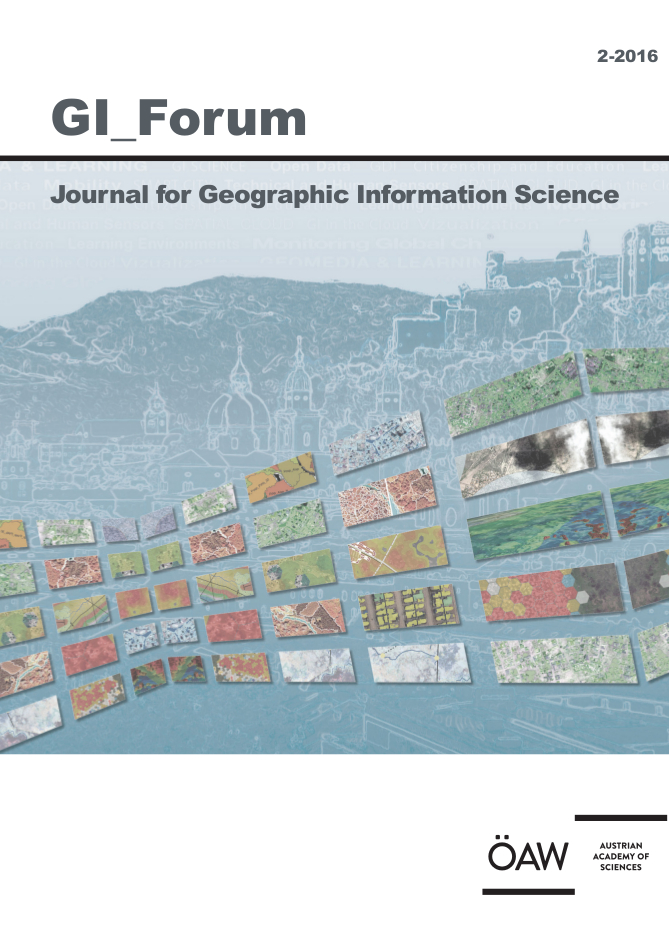
GI_Forum 2016, Volume 4, Issue 2, pp. 20-35, 2016/12/02
Journal for Geographic Information Science

The movements of animals or humans are characterized by starting points, transitions and end points, where starting and end points typically represent distinct locations. Knowledge of such locations and movement patterns is relevant to predict future movements or to detect regularities in movement behaviour. We present a Brownian bridge-based approach applied to human movement data to extract regularities of people staying in distinct locations. Such information is, for example, of interest in zoology (e.g. animal home range estimation) or health (e.g. detection of deviations from regular behaviour of people with cognitive impairments). To obtain information about where a person stayed, we derived the areas of their whereabouts from GPS trajectories by using a Brownian bridge movement model (BBMM). The resulting whereabouts areas were intersected with these GPS trajectories to create so-called whereabouts tables, which describe time of day, duration and place of a person’s stay. The probability of finding a person in a particular area within a particular time window was determined. The whereabouts areas of two people were investigated and assessed by using two tailored quality measures: spatial accuracy and spatial uniqueness. In order to reduce the computational costs of BBMM, down-sampling was investigated. With respect to spatial accuracy, results improved by down-sampling.
Keywords: brownian bridge movement model, whereabouts area, whereabouts range, time cycle